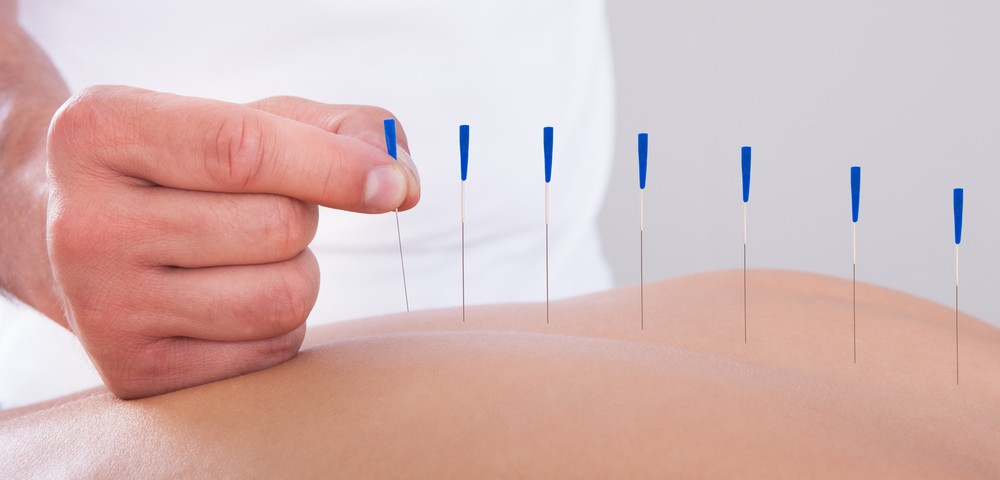Individualized acupuncture treatments given to fibromyalgia patients in a primary care setting provided effective pain relief and an enhanced quality of life, with effects persisting for a year, a study, published in the journal Acupuncture in Medicine, reported.
Fibromyalgia affects between 2 percent and 5 percent of the population, and has a high economic and social impact. Classified as a functional chronic disease, it is manifested clinically by chronic widespread pain associated with fatigue, sleep disorder, and/or depression, among other symptoms.
Ninety-one percent of patients with fibromyalgia have tried some form of complementary and alternative medicine. Acupuncture, a key component of traditional Chinese medicine, involves the insertion of extremely thin needles through the skin at strategic points on the body, and is commonly used to treat pain. A recent systematic review concluded there is low to moderate evidence supporting acupuncture to treat fibromyalgia pain and stiffness, compared to standard treatments.
To evaluate the efficacy of an individualized acupuncture protocol for patients with fibromyalgia, Jorge Vas from the Pain Treatment Unit, Doña Mercedes Primary Health Centre, Dos Hermanas, in Spain, and colleagues designed a randomized controlled trial to determine the clinical efficacy of traditional acupuncture as a fibromyalgia treatment, using a personalized point-selection algorithm based on the characteristics of each patient. The study was titled “Acupuncture for fibromyalgia in primary care: a randomised controlled trial.”
A total of 164 participants, with a mean age of 52.8, and a mean diagnosis of 70 months were enrolled in the trial; 153 completed the study. All patients were assessed with the Fibromyalgia Impact Questionnaire (FIQ), SF-12, pain on a VAS, tender point count, and the Hamilton Depression Rating hetero-evaluation Scale (HDRS). In addition, 114 patients were asked to complete a questionnaire item about family structure.
Patients were randomly assigned to either the intervention (individualized acupuncture, IA, n=80) or a sham intervention (sham acupuncture, SA, n=82). All were assessed at baseline (T0), at 10 weeks (T1), at six months (T2) and at 12 months (T3). In both the IA and SA groups, one session per week (lasting 20 minutes) was provided, in addition to usual pharmacological treatment.
The results revealed that at T1 there was a 41.2 percent decrease in the levels of pain (VAS) in the treatment group, compared to 27.1 percent in the sham group. At T3, pain relative to baseline was reduced by 19.9 percent in the treatment group and by 6.1 percent in the sham group.
Reported improvement in the treatment group FIQ scores at T1, T2, and T3 were 35.9 percent, 25 percent and 22.2 percent, respectively, and 24.5 percent, 11.2 percent and 4.9 percent, respectively, in the sham group.
At T1 in the treatment group, there was a 32.8 percent, 31 percent and 33 percent improvement in fatigue (FIQ), anxiety (FIQ) and depression scores, respectively, when compared to 19 percent, 17.8 percent and 18.5 percent in the sham group. Importantly, improvements favorable to the treatment group persisted at later time points.
After adjusting for tender pressure points and total FIQ score, the results showed there was an improvement in the relative difference in pain intensity by 14.4 percent in the treatment group compared to the sham group.
Researchers, however, cautioned that these findings need to be carefully interpreted because patients were taking a larger amount of antidepressants at the final time point, which could affect the results. The individualized treatment had no effect on depression, the researchers said.
They also suggested that the differing results seen in this study compared to previous acupuncture and fibromyalgia pain studies may be due to the individualized approach used, as opposed to a standardized approach.

